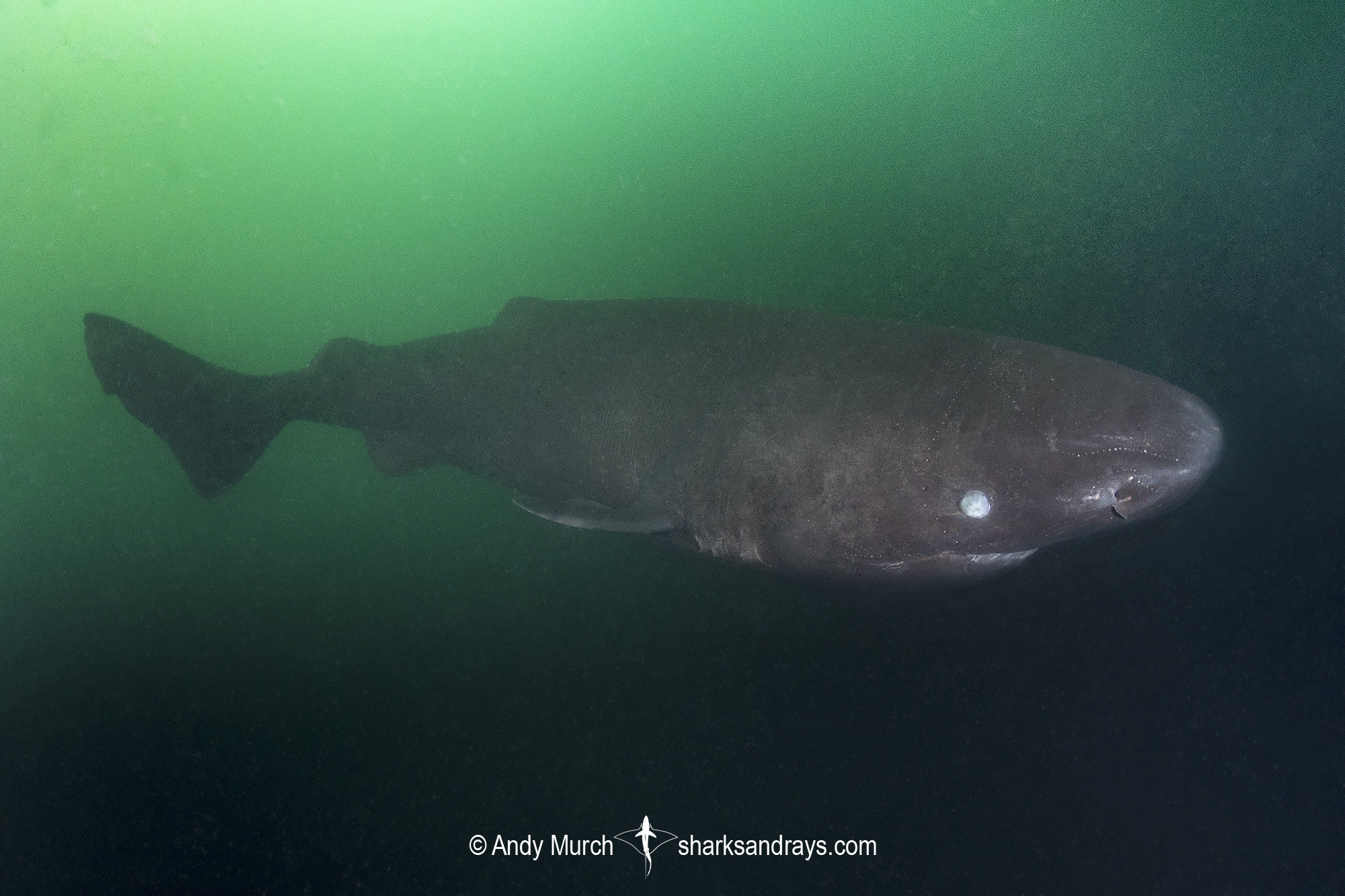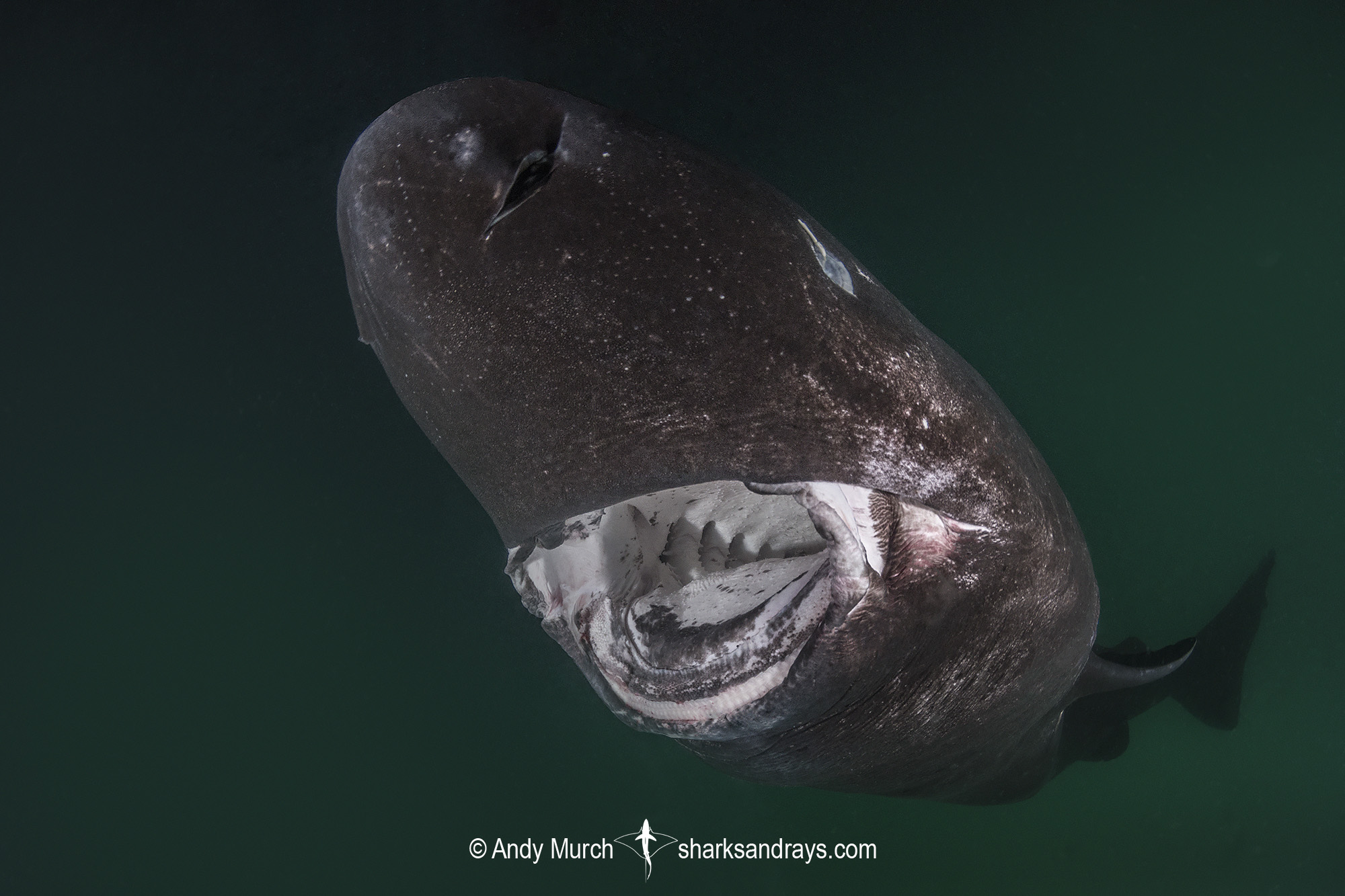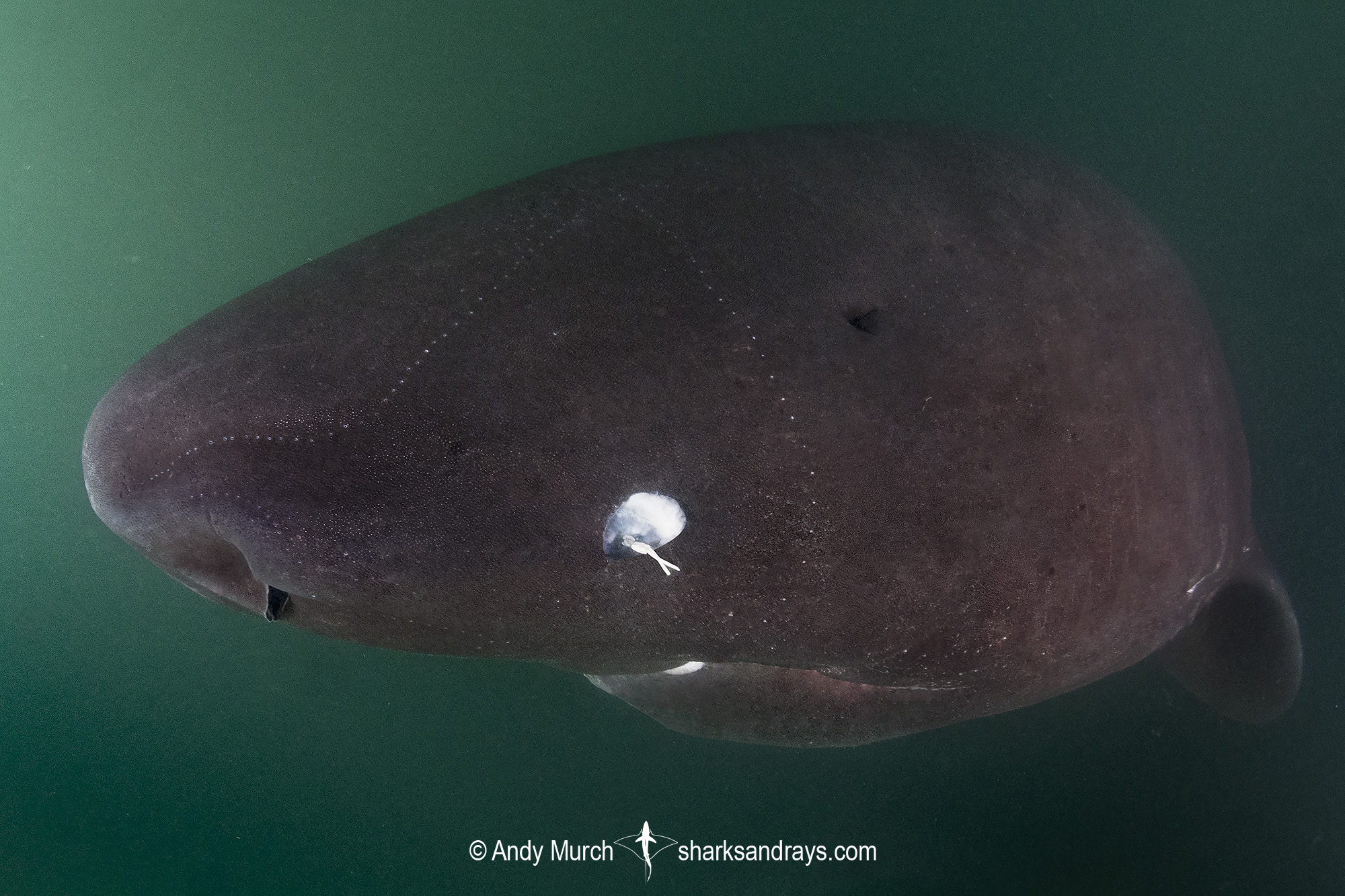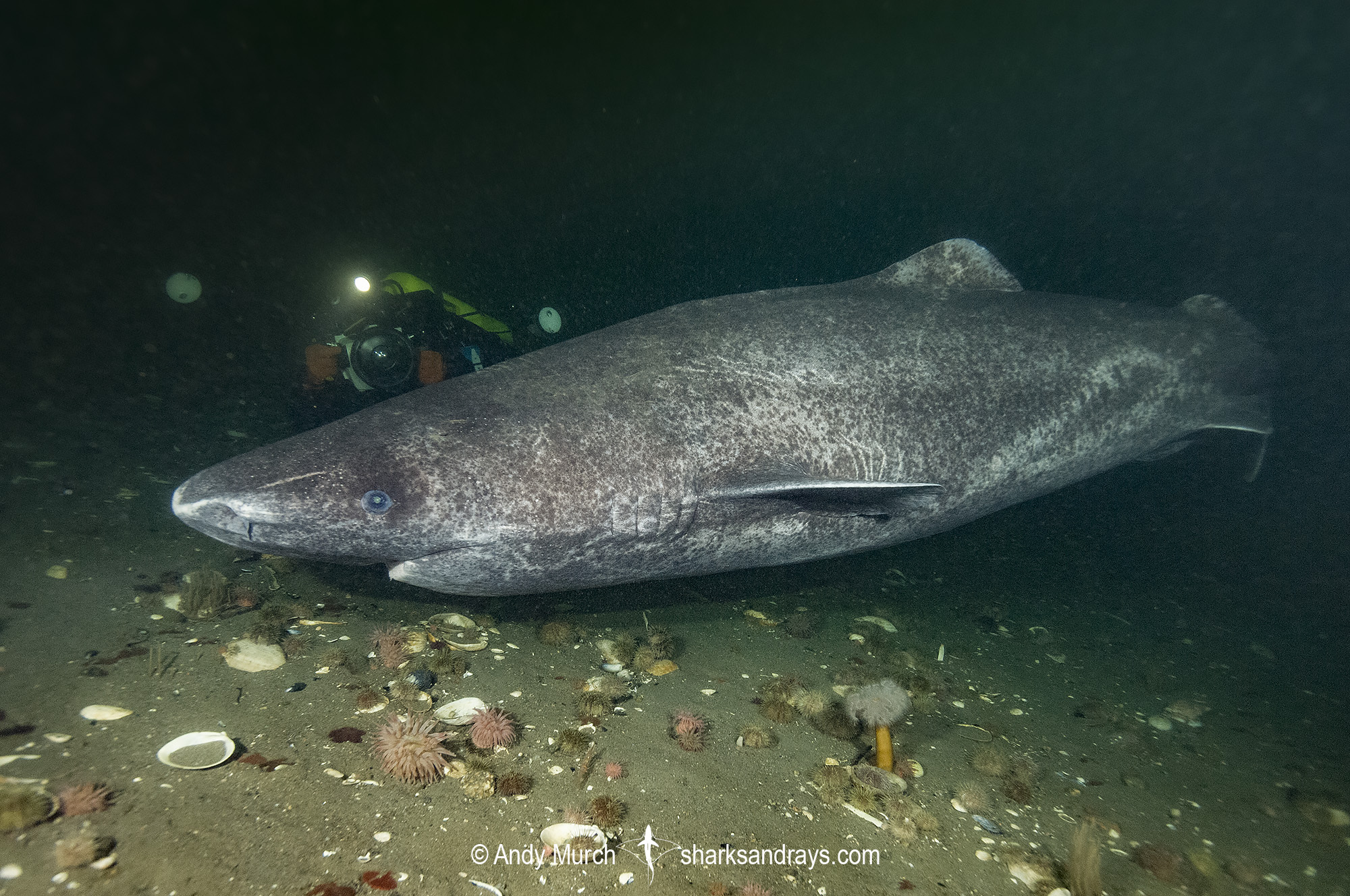Common name(s)
Pacific Sleeper Shark, Mud Shark.
Identification
A very large, heavy-bodied shark with relatively small fins. Snout length roughly equal to mouth width. Lower teeth form a continuous serrated edge. Small, spiracle behind eye. Eyes often have parasitic copepods attached. Dorsal fins long and low. First dorsal fin origin midway between pectoral fin free rear tip and pelvic fin origin. Second dorsal origin over pelvic fin insertion. Pectoral fins small with rounded apexes and free rear tips. Caudal fin has a very weak pre-caudal notch.
Entire body black or dark reddish-brown.
Size
Maximum verified length 440cm but photographic evidence suggests that Pacific sleeper sharks may reach 7m. If so, the could be the largest predatory fish in the world. Size at birth 40-50cm.
Habitat
A boreal / temperate species usually found in deep water of the continental shelf and slope but also enters shallow bays. One individual was found trapped in a tide pool. From the intertidal zone to at least 2000m.
Distribution
Pacific Arctic and North Pacific Ocean. On the west side of the Pacific, it occurs from the Bering Sea southward along the Kamchatka Peninsula to Japan. On the east side of the Pacific it occurs all along the coast of Alaska, southward as far as Baja, Mexico, and possibly further. Generally occurs in deeper water closer to the tropics.
The southern limits of the Pacific sleeper shark’s range is not clearly understood due to confusion with other sleeper sharks from the southern hemisphere.
Conservation Status
DATA DEFICIENT
This species is taken as bycatch in several fisheries and usually discarded. It is notably affected by bottom trawl fisheries in the western Bering Sea (Orlov 2005), by longline fisheries for sablefish and Pacific halibut in the eastern North Pacific (Courtney et al. 2006a, b). Incidental catch in US waters in 2006 was 435 mt, in some years it has reached ~ 1,400 mt (Courtney et al. 2006a, b).
From 1997–2001 in the Bering Sea Aleutian Islands area, Pacific sleeper sharks were caught primarily by the Pacific cod longline fishery (30%), walleye pollock pelagic trawl fishery (26%), Greenland turbot longline fishery (17%), flatfish trawl fishery (12%), and sablefish longline fishery (10%). From 1997–2002 in the Bering Sea Aleutian Islands area, Pacific sleeper sharks were caught primarily in two statistical areas, which made up 57% and 20% of the total sleeper shark catch. There has been an increasing trend in catch of Pacific sleeper sharks from two statistical areas in the eastern Bering Sea between 1997-2002, however, this may reflect a change in fishing effort as opposed to any increase in the population size.
Fisheries in the western Bering Sea catch mainly juveniles of this species, present at shallower depths than adults. Greater depths that are not currently fished may provide some refuge for adult Pacific sleeper sharks, however the situation should be monitored.
Citation
Ebert, D.A., Goldman, K.J. & Orlov, A.M. 2009. Somniosus pacificus. The IUCN Red List of Threatened Species 2009: e.T161403A5416294. https://dx.doi.org/10.2305/IUCN.UK.2009-2.RLTS.T161403A5416294.en. Downloaded on 19 January 2021.
Reproduction
Presumed aplacental viviparous like other squaloid sharks. Gravid females have never been encountered but a 355cm female examined by Gotshall and Jow in 1965 contained 300 large oocytes (immature eggs).
Jose Castro suggests that the generally large size of adult females, containing large number of similarly sized eggs, and relatively small size at birth (based on one record of free swimming 41cm neonate with a fresh umbilical scar that was trawled from the Challenger Plateau) suggests that litters are probably large, but this is far from conclusive.
Diet
Feeds on flatfishes, Pacific salmon, rockfish, harbour seals, octopi, squid, crabs, tritons, and carrion. It is unclear if the Pacific sleeper shark is capable of catching fast moving prey or if it scavenges for carcasses that have fallen to the bottom. Its long head and oral cavity imply that it has a powerful suction capability but the use of this attribute has not been observed in the field.
Behavior
A slow swimmer that is probably capable of short bursts of speed when hunting fast moving prey such as pinnipeds and squid. The lack of records of large gravid females suggests that Pacific sleeper sharks may segregate by sex or size.
Reaction to divers
Pacific sleeper sharks are rarely (if ever) encountered by divers. However, captured animals that were released in shallow water were approachable until they outpaced observers.
Diving logistics
There are no areas where Pacific sleeper sharks are encountered by divers but they are relatively abundant from southeast Alaska to Washington. Therefore, it may be possible to bring them in by baiting on the substrate close to recreational dive limits.
What’s new
View our full list of updates
Similar species
Greenland Shark In the arctic ocean there may be some overlap in the range of these two enormous sleeper sharks. These species cannot be distinguished from each other easily in the field.










